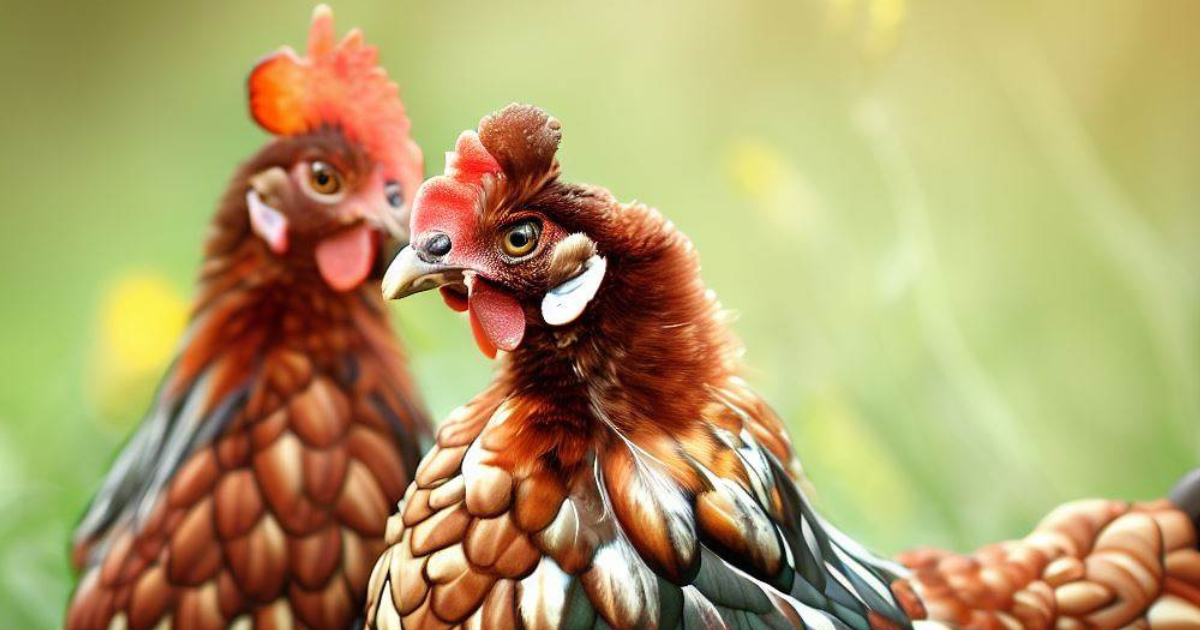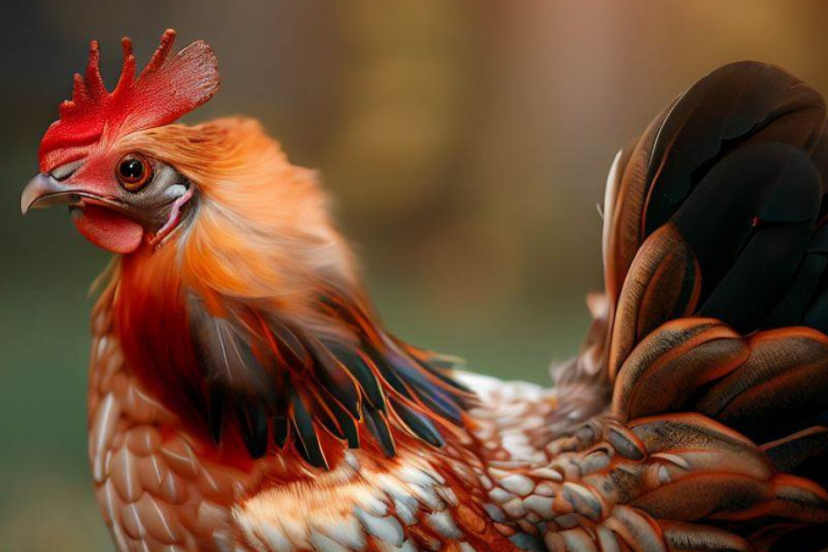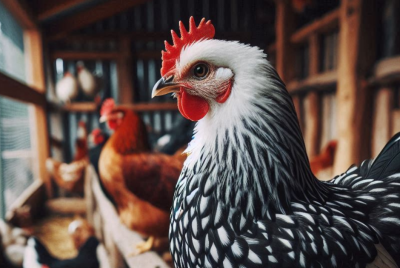There is one breed that holds a special place in my heart: Buckeye chickens. These captivating birds have captured my attention with their stunning appearance, amiable temperament, and remarkable dual-purpose qualities. In this article, I’ll share my personal experience and enthusiasm for Buckeye chickens while providing helpful suggestions and reasons for considering them in your flock.
Characteristics of Buckeye Chickens
When it comes to Buckeye chickens, their distinct characteristics set them apart from other breeds. Their appearance showcases a stunning combination of rich mahogany-colored feathers and a vibrant red comb. With their muscular build and upright stance, they exude strength and elegance. Furthermore, their docile and friendly nature makes them a pleasure to interact with, making them suitable for both experienced and novice chicken keepers. As a dual-purpose breed, Buckeyes excel in both egg production and meat quality, making them a practical choice for those seeking self-sufficiency.
Rich History
The Buckeye chicken breed holds a rich history within the United States. Developed by Nettie Metcalf in the late 1800s, these chickens were meticulously bred in Warren, Ohio, with a focus on hardiness, adaptability, and farm life suitability. The breed’s distinctive mahogany-red plumage sets it apart from others. Recognized by the American Poultry Association in 1904, Buckeyes initially gained popularity in the Midwest and have since garnered renewed interest. With their resilience, excellent foraging skills, and compatibility with free-range systems, Buckeye chickens offer a sustainable and self-sufficient option for poultry enthusiasts and farmers. Explore the legacy of Buckeyes, a breed that represents a vital part of American poultry heritage.
Selecting and Acquiring Buckeye Chickens

Finding reputable breeders is crucial when acquiring Buckeye chickens to ensure you start with healthy and high-quality stock. Look for breeders who prioritize breed preservation and adhere to breed standards. Visiting the breeder’s farm and observing their practices can give you valuable insights into their commitment to the breed. Additionally, evaluating the health, vitality, and overall conformation of the birds will help you make an informed decision.
Housing and Care for Buckeye Chickens
Creating a suitable environment for your Buckeye chickens is essential for their well-being and productivity. Providing a spacious and secure coop with proper ventilation and predator-proofing is vital. Buckeyes are active foragers, so a sizeable outdoor run or access to free-ranging will allow them to exhibit their natural behaviors. A balanced and nutritious diet, consisting of high-quality poultry feed supplemented with fresh
greens and occasional treats, will support their overall health and egg production. Regular health maintenance, including vaccinations and parasite control, is necessary to ensure their well-being.
Breeding and Incubation
Breeding Buckeye chickens requires careful selection of breeding stock to maintain the breed’s desirable traits. Look for individuals that embody the breed standard, with good conformation, vibrant plumage, and friendly temperaments. The breeding process involves introducing the rooster to the hens and ensuring proper mating. Once the hens lay eggs, you can choose to incubate them or let them go broody for natural incubation. Understanding the incubation process, including temperature and humidity control, will increase your chances of successful hatch rates.
Coexistence
Buckeye chickens can coexist with various other chicken breeds. Their amiable and non-aggressive nature allows them to live harmoniously with different flock members. When selecting chicken breeds to keep alongside Buckeyes, it is important to consider factors such as temperament, size, and climate compatibility. Some chicken breeds that are commonly known to coexist well with Buckeyes include:
1. Rhode Island Reds: They are hardy, dual-purpose chickens known for their egg-laying abilities.
2. Plymouth Rocks: These chickens are friendly and adaptable, with good egg-laying capabilities.
3. Australorps: They are docile, gentle, and excellent layers of brown eggs.
4. Orpingtons: These chickens are known for their friendly nature, cold-hardiness, and good egg production.
5. Sussex: They are calm, versatile birds that do well in various climates and are good layers.
It’s important to note that the compatibility of chicken breeds can also depend on factors such as space, available resources, and individual personalities within the flock. Proper introductions and monitoring of the flock dynamics are essential when introducing new chickens to an existing flock.
Raising and Caring for Buckeye Chicks
When the adorable Buckeye chicks arrive, providing them with optimal care is crucial for their healthy growth and development. Brooding them in a warm and secure environment is essential, with a heat source and appropriate bedding. Offering a balanced starter feed formulated specifically for chicks will support their nutritional needs. As they grow, gradually transition them to a grower feed. Socialization and gentle handling from an early age will help them become friendly and well-adjusted adult birds.
Exhibition and Show Preparation
If you’re interested in showcasing your Buckeye chickens in poultry shows, proper preparation is key. Begin by familiarizing yourself with the show requirements and breed standards. Grooming and conditioning your birds involves grooming their feathers, trimming their nails, and ensuring they are in top physical condition. Presenting them confidently and demonstrating showmanship skills can greatly enhance your chances of success.
Closing remarks
In conclusion, Buckeye chickens are a breed that encompasses beauty, temperament, and practicality. Their stunning appearance, amiable nature, and dual-purpose qualities make them a valuable addition to any flock. As a passionate enthusiast, I encourage you to consider Buckeye chickens for their unique attributes and the joy they bring to chicken keeping.
FAQs
1. Are Buckeye chickens good for small backyard flocks?
Absolutely! Buckeye chickens are well-suited for small backyard flocks due to their friendly temperament, manageable size, and dual-purpose qualities.
2. Can Buckeye chickens tolerate cold climates?
Yes, Buckeyes are known for their hardiness and can tolerate cold climates. Their dense plumage provides excellent insulation.
3. How do I ensure the health and well-being of my Buckeye chickens?
Regular health checks, proper nutrition, access to clean water, and a clean living environment are crucial for maintaining the health and well-being of Buckeye chickens.
4. Can Buckeye chickens coexist with other chicken breeds?
Yes, Buckeyes generally get along well with other chicken breeds as long as they are properly introduced and have enough space and resources.
5. What makes Buckeye chickens unique compared to other breeds?
Buckeyes stand out with their stunning mahogany plumage, friendly temperament, and exceptional dual-purpose qualities that make them ideal for both eggs and meat production.
Remember, raising Buckeye chickens is a rewarding experience that combines beauty, practicality, and a genuine connection with these captivating birds. Whether you’re a seasoned chicken keeper or just starting your poultry journey, Buckeyes are an excellent choice that will enrich your flock and bring joy to your backyard.
*We may earn a commission from purchases made through our links, at no cost to you. This does not affect our product recommendations. Please see our disclosure to learn more.





